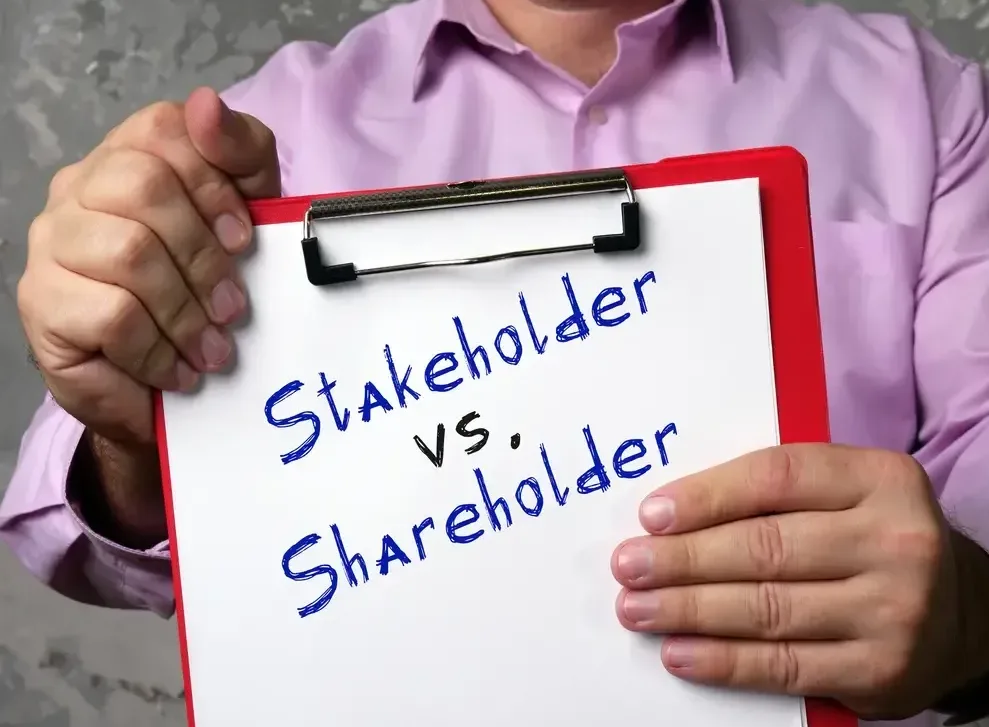People often interchangeably use the terms shareholder and stakeholder. Even though these two-terms sound similar, their investment in a company is quite different. A shareholder is a person who owns stock in a company, while a stakeholder is a person who is impacted by the changes in the business. For quite a few years, it has been known that stakeholders are more interested in the organization’s performance than shareholders. This highlights the fact that though shareholders are always stakeholders in an organization, not all stakeholders are shareholders.

Jump ahead to
Who is a Shareholder?
An individual, company, or institution that holds one or more shares in a firm is known as a shareholder. They are primarily concerned with the organization’s financial benefits and do not participate in the administration of a company’s activities. Typically, shareholders are considered as the partial owners of the organization, but they are not responsible for its debts. Their profit is determined by the organization’s performance. For example, if the performance is good, shareholders are deemed to earn more profits. On the contrary, if the performance of the organization is poor, their stocks will fall in value. Moreover, they are also entitled to sell their investments according to their preferences.
Who is a Stakeholder?
What is the difference between Shareholder and Stakeholder?
Priorities
Shareholders and stakeholders have different priorities. Shareholders’ priorities are to boost the overall revenue and the stock price since they invested in the organization. On the other hand, stakeholders’ priority is to increase the overall performance of the organization. Internal stakeholders are focused on completing the project successfully so that they will be treated favorably by the organization. While external stakeholders do not receive direct advantages from the project, they do receive indirect benefits such as a high-quality product, excellent customer service, and establishing partnerships.
Impact
The performance of an organization has a direct impact on shareholders since their profit is decided by the performance of the company. For example, if the performance is good, they will make a profit, but if the performance is bad, they will lose their money. However, they have the option to sell their investments if the stock price falls. On the other hand, stakeholders have both direct and indirect impacts on the success of businesses. For example, if a company’s performance is poor, employees may lose their employment, and suppliers may be indirectly impacted by losing their partnership with the organization.
Interest
Shareholders have a short-term interest in the company’s performance since they can sell the stock whenever they need to. On the other hand, stakeholders have a long-term interest in the organization’s success since they rely on its income and performance.
Power
Shareholders have the same rights as business owners, particularly when it comes to financial matters. However, they do not have the same power over a business as stakeholders do. Stakeholders are entitled with the power to make or break important decisions for a business and its projects.
Category
Shareholders are categorized into minority and majority shareholders: minority shareholders are someone who owns less than 50% of a company’s stock, whereas majority shareholders are someone who owns 50% or more of a company’s stock.
Stakeholders are categorized into internal and external stakeholders: Internal stakeholders include employees, shareholders, and managers who have a direct relationship with the company. On the other hand, external stakeholders such as suppliers, vendors, and customers have no direct relationship with the business but are influenced indirectly by its performance.
Conclusion
A shareholder is someone who has at least one share in an organization whereas, a stakeholder is sometimes who will be affected by the company’s performance. The shareholder does not rely on the company’s performance since they can sell their shares based on any circumstance as they deem fit. However, stakeholders solely rely on company performance for their income.
Professionals willing to gain deeper insights on people can take up CAPM Certification. In order to fulfill one of the requirements, individuals can enroll in CAPM Training sessions and gain practical knowledge of how people’s domain of project management can affect an organization’s success.



